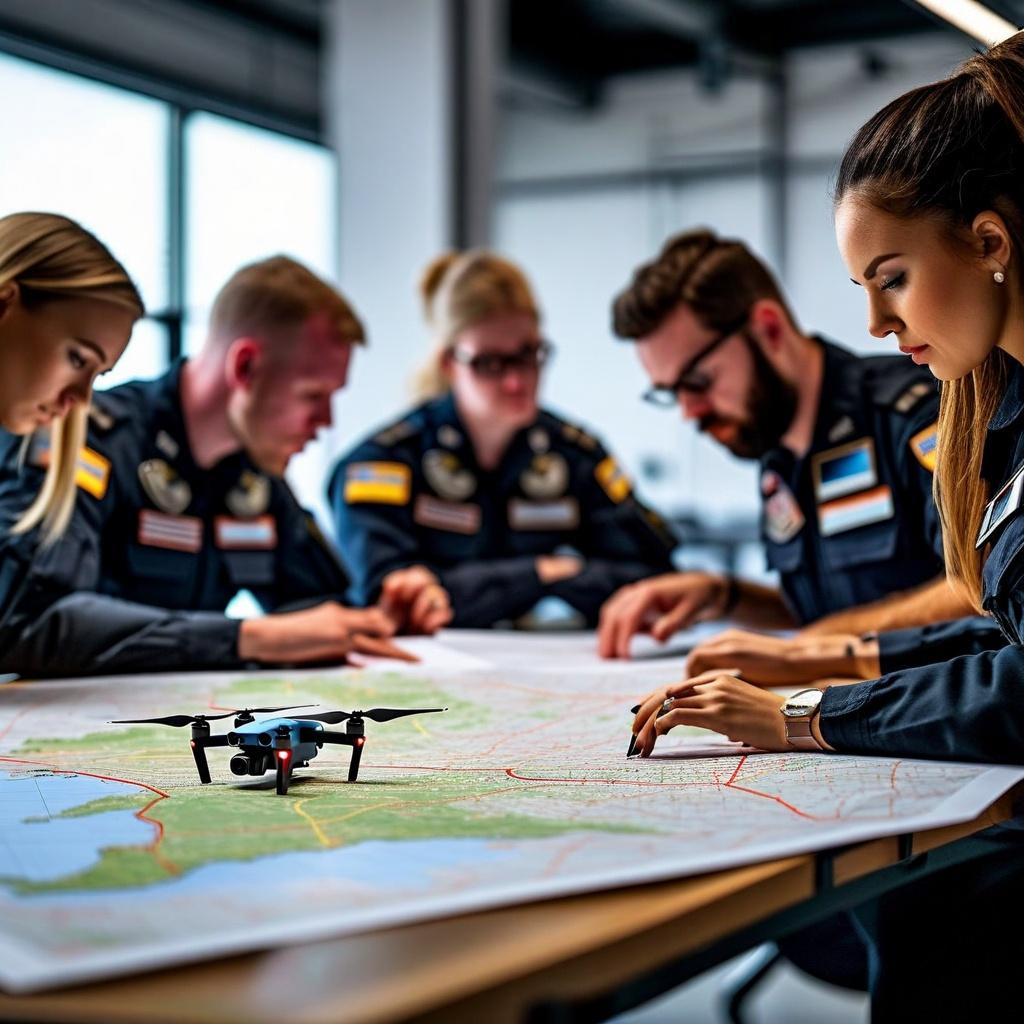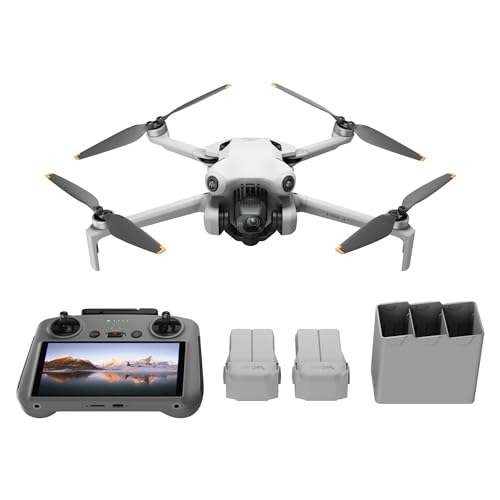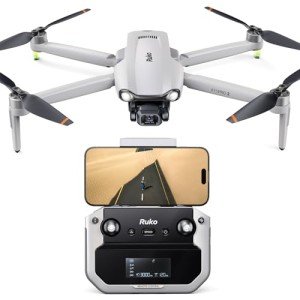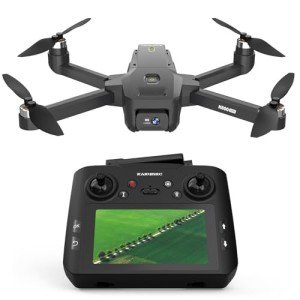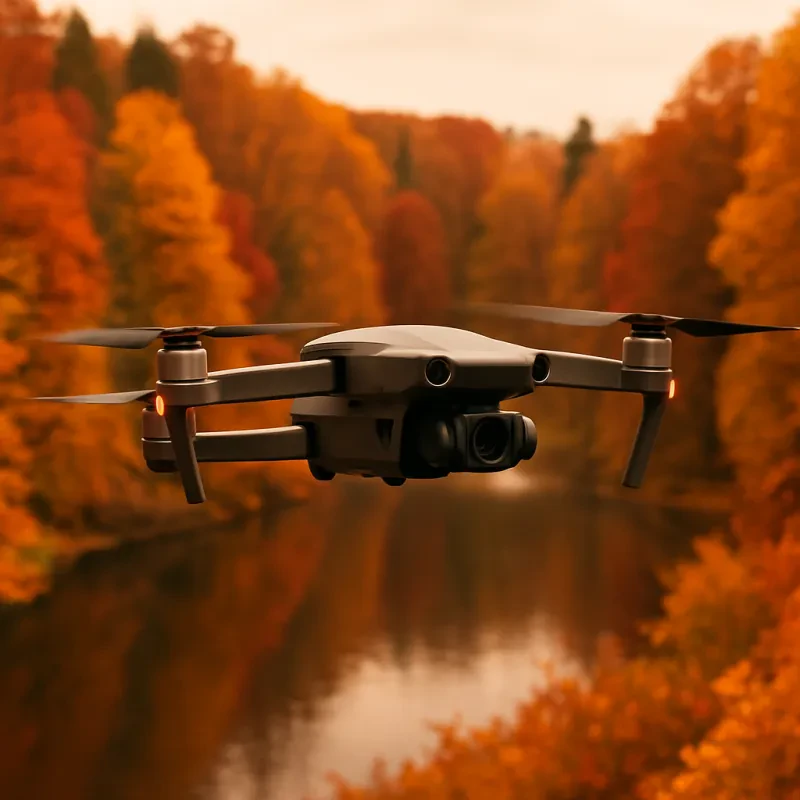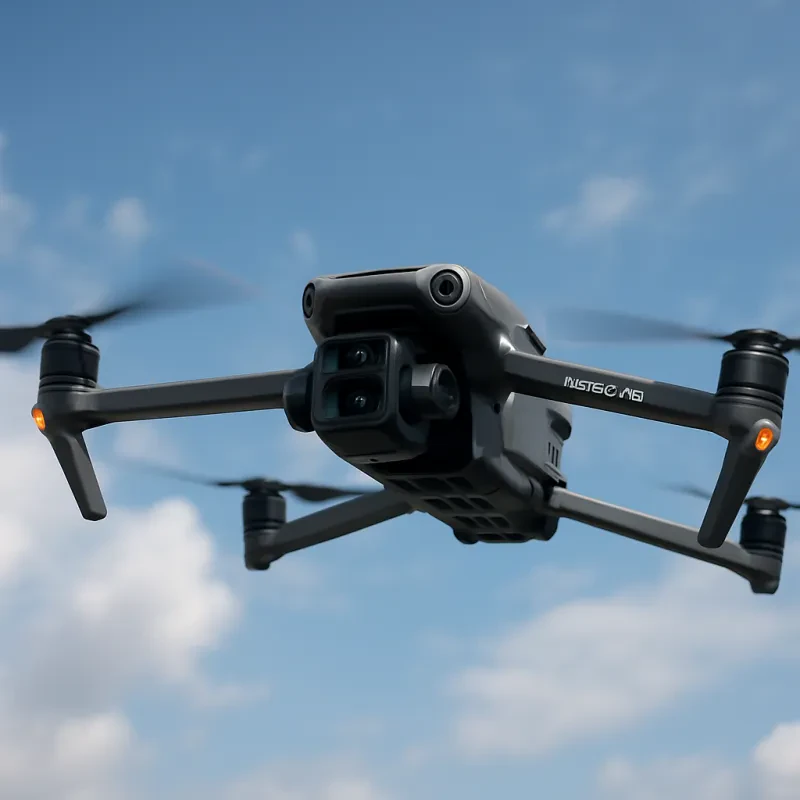Introduction to Airspace Classes
The classification of airspace is a fundamental aspect of aviation that ensures the safe and efficient operation of aircraft, including drones. Airspace is divided into various classes, each with specific regulations designed to accommodate the unique needs of different types of aviation activities. Among these, Class B and Class C airspace are particularly significant, as they impose specific requirements and restrictions that directly impact drone pilots.
Class B airspace typically surrounds the busiest airports, where the highest level of air traffic occurs. This airspace is characterized by a vertically stacked structure that varies in layers, maintaining strict control to prevent collisions between commercial and general aviation traffic. For drone pilots operating in Class B airspace, obtaining prior authorization is mandatory. This process involves submitting a request through the FAA's online platform, which provides a mechanism for pilots to navigate complex guidelines while ensuring safety in these high-traffic environments.
On the other hand, Class C airspace surrounds airports that have a moderate volume of traffic and typically features a core area of controlled airspace extending upwards from the surface. Similar to Class B, operating a drone in Class C airspace requires specific permissions, although the regulatory framework is less stringent compared to Class B. Drone pilots must be aware of the operational limitations and reporting requirements that dictate safe drone practices within these zones. Understanding the distinctions between these classes is crucial for compliance with regulations and for the enhancing safety of drone operations.
As drone technology proliferates, understanding airspace classifications like Class B and Class C has become increasingly vital. Knowledge of these categories equips drone pilots with the necessary tools to operate responsibly, ensuring adherence to aviation laws while navigating the complexities of airspace regulations.
What is Class B Airspace?
Class B airspace is a category of controlled airspace that surrounds the nation's busiest airports, specifically designed to facilitate the safe and efficient movement of aircraft. This airspace typically extends from the surface up to 10,000 feet above sea level in the vicinity of major airports, often resembling an upside-down wedding cake shape. The dimensions of Class B airspace can vary significantly based on the airport's traffic levels and the surrounding geographical features, but it universally covers a defined area that organizes air traffic to prevent collisions between various aircraft types, including commercial airliners and general aviation.
What distinguishes Class B airspace from other classes, such as Class A or Class C, is the level of air traffic control (ATC) services provided. Pilots operating within Class B airspace are required to establish two-way radio communication with ATC before entering. Additionally, pilots must have an air traffic clearance to operate within this airspace, emphasizing the importance of effective coordination. The upper limits of Class B airspace, typically extending to 10,000 feet, allow for a high density of aircraft operations, which underscores the need for stringent communication and operational protocols.
For drone pilots, Class B airspace presents specific operational limits. Generally, the use of drones is significantly restricted in these areas, requiring a comprehensive understanding of the regulations set forth by the Federal Aviation Administration (FAA). Drone operators must apply for special waivers or use specific operational protocols to fly in Class B airspace legally, with the primary goal of ensuring safety for manned aircraft. Understanding these restrictions is crucial for drone pilots to navigate the complexities of airspace classification and ensure compliance while maximizing operational effectiveness.
What is Class C Airspace?
Class C airspace is a designated area of airspace that, while still highly regulated, is less restrictive than Class B airspace. This classification typically surrounds busy airports with moderate traffic levels, often serving regions where both general aviation and commercial pilots operate. The dimensions of Class C airspace usually extend from the surface up to a specific altitude, generally reaching 4,000 feet above ground level. It is characterized by a core area with a radius of approximately five nautical miles and an outer area that extends up to ten nautical miles, often associated with Terminal Radar Service Areas (TRSAs).
In terms of operational requirements, drone pilots operating in or near Class C airspace must adhere to specific regulations. These include obtaining both authorization from air traffic control (ATC) and maintaining communication with ATC during operations. This communication is essential because it ensures that all aircraft within the airspace can operate safely without conflicts. Drone pilots are encouraged to familiarize themselves with the specific Class C boundary dimensions and the associated operational parameters before embarking on any flight missions.
Another critical aspect of Class C airspace involves the communication protocols that pilots should follow. Unlike the more stringent regulations of Class B airspace, class C airspace allows for greater flexibility in operations. However, drone pilots are still required to utilize proper procedures to maintain situational awareness and safety. Following the established communication protocols, such as responding to ATC inquiries and announcements, will significantly contribute to a smooth flying experience within Class C environment.
Ultimately, understanding the characteristics and operational requirements of Class C airspace is vital for drone pilots seeking to navigate this airspace safely and effectively. By adhering to the communication guidelines and operational standards specified for Class C areas, pilots can enhance their flying experience while minimizing the risks associated with airspace violations.
Regulations for Flying Drones in Class B and Class C Airspace
The Federal Aviation Administration (FAA) has established a series of regulations governing drone operations, particularly in controlled airspace such as Class B and Class C. These regulations ensure the safety of both manned and unmanned aircraft. To operate a drone in Class B airspace, which typically surrounds the busiest airports, pilots must hold at least a Remote Pilot Certificate issued by the FAA. This certificate indicates that the pilot has completed the necessary training and understands the complexities of navigating airspace regulations.
In addition to holding a Remote Pilot Certificate, drone operators in Class B airspace need to secure an Air Traffic Control (ATC) clearance before conducting any flights. This requirement is crucial as it allows ATC to maintain an orderly flow of air traffic and ensure that drones do not pose a hazard to manned aircraft. When requesting clearance, pilots must provide specific information such as their drone's registration number, the intended flight path, and the purposes of the operation. It's vital that drone pilots prepare this information in advance to facilitate the clearance process.
For Class C airspace, which typically encompasses regions around airports not as heavily trafficked as Class B, the regulations are somewhat similar. A Remote Pilot Certificate is still required, but while ATC clearance is recommended, it may not always be mandatory. Pilots must remain vigilant and must communicate with ATC when operating their drones in these areas, as they need to adhere to specific altitude restrictions and stay clear of manned aircraft. Documentation such as drone registration and proof of certification must always be readily available for inspection by authorities during operations. Following these guidelines assists in maintaining airspace safety and upholds the standards set forth by the FAA.
Communication with Air Traffic Control (ATC)
Effective communication with Air Traffic Control (ATC) is paramount for drone pilots operating within Class B and Class C airspace. Understanding the procedural requirements for interaction with ATC is essential to ensure compliance with regulations and maintain safety. Before any flight, the pilot must familiarize themselves with the ATC frequencies associated with the intended airspace, which can typically be found in sectional charts or via drone-specific applications. It is crucial to possess a solid understanding of the ATC lexicon and standard operating procedures, as this facilitates smoother communications.
Prior to takeoff, a pilot should make initial contact with ATC, identifying themselves, their aircraft type, and the purpose of their flight. It is important to clearly communicate intentions, especially when requesting permission to operate within controlled airspace. Phraseology used in these communications should be concise; using callsigns and necessary information efficiently helps minimize misunderstandings. ATC personnel are trained to handle a variety of scenarios but providing them with clear and complete information is the responsibility of the pilot.
During the flight, ongoing communication is vital. Pilots should continuously monitor ATC instructions and promptly acknowledge any updates or changes. If you encounter challenges, such as unclear instructions or environmental factors affecting communication, it is advisable to remain calm and re-establish contact with an appropriate ATC frequency as needed. Utilizing proper radio etiquette can enhance communication efficiency and is deemed essential in reducing the likelihood of incidents. Furthermore, maintaining situational awareness not only aids in responding to ATC communications but fosters a culture of safety around other air traffic.
By prioritizing effective engagement with ATC, drone pilots can significantly enhance operational safety in Class B and Class C airspace, allowing for successful, lawful flights amidst busy aviation environments.
Pre-Flight Planning and Resources
Pre-flight planning is an essential aspect of flying drones within regulated airspace, particularly in Class B and Class C airspace. A well-prepared flight can enhance the safety and efficiency of operations, ensuring compliance with aviation regulations. Drone pilots must commit to thorough planning before launching, as various factors influence both the safety of the drone and the surrounding airspace.
One of the primary resources available to drone pilots is the use of airspace maps. These maps provide crucial information about the classification of the surrounding airspace, height restrictions, and proximity to airports. Online tools such as FAA's UAS Data Delivery System and apps like Aeroapp or SkyVector can significantly help pilots in understanding the layout of airspace, including where Class B and Class C airspace begins and ends. Utilizing such resources allows pilots to anticipate any changes that might occur during their flight and plan accordingly.
In addition to airspace maps, helicopter pilots should consistently check NOTAMs (Notice to Airmen) that inform them about temporary changes or hazards in the airspace. Flight operations can be affected by NOTAMs, which encompass information about airspace closures, active military operations, or other crucial updates necessary for safe navigation. Pilots should also review weather reports before their flights, as adverse weather conditions can adversely affect drone performance and compliance with airspace regulations.
Moreover, establishing flight objectives and reviewing potential obstacles along the planned flight path further enhances safety. Engaging with tools like the FAA’s B4UFLY app can assist pilots in evaluating airspace classifications and determining their eligibility to fly in specific areas safely. By taking the time to thoroughly prepare for each flight, drone pilots can ensure adherence to laws governing Class B and Class C airspace, minimizing risks and promoting an orderly usage of the skies.
Case Studies: Successful Drone Operations in Class B and C Airspace
In the realm of aviation, adhering to regulatory guidelines while maximizing operational potential is paramount, especially for drone pilots navigating Class B and Class C airspace. A variety of successful case studies illustrate how drone operators can effectively maneuver through these regulated environments, showcasing the benefits of advanced technology and strategic planning.
One notable example involves a commercial drone delivery service operating in a busy metropolitan area classified as Class B airspace. To achieve compliance with Federal Aviation Administration (FAA) regulations, the company established a robust flight management system. They coordinated closely with air traffic control (ATC) to ensure real-time communication about their drone's flight path. This proactive engagement allowed for safe integration with manned aircraft, significantly reducing potential collision risks. As a result, the service not only provided timely deliveries but also proved the viability of drone operations in urban centers, demonstrating an efficient use of technology within regulatory frameworks.
Additionally, another case study highlights a recreational drone festival held in proximity to Class C airspace. Event organizers collaborated with local authorities and the FAA to create a detailed flight plan, ensuring that drone flights adhered to the specified altitudes and proximity restrictions. By utilizing a combination of educational sessions for participants and clear signage outlining airspace limits, the event was executed smoothly. The successful management of drone operations emphasized the potential for recreational use while underscoring the importance of compliance with regulatory guidelines.
Finally, a critical use of drones during emergency response situations within Class C airspace showcases their significant advantages. During a natural disaster, drone operators coordinated with emergency services to provide real-time aerial assessments. They ensured adherence to airspace regulations while effectively aiding in search and rescue missions. These instances not only exhibit the versatility of drones but also the importance of strategic planning and communication in managing successful operations in regulated airspace.
Best Practices for Drone Pilots in Controlled Airspace
Operating a drone in Class B and C airspace necessitates adherence to specific best practices to ensure safety and regulatory compliance. One of the primary considerations for drone pilots is to conduct thorough pre-flight planning. This includes familiarizing oneself with the airspace layout, understanding the air traffic control (ATC) communications protocols, and verifying the current NOTAMs (Notices to Airmen) that could impact flights. Pilots should utilize resources, such as sectional charts and flight planning tools, to identify any temporary or permanent restrictions in the area.
Situational awareness is crucial in controlled airspace, especially in environments where manned aircraft are actively operating. Drone pilots must maintain visual contact with their drones at all times, conforming to the regulations set forth by the Federal Aviation Administration (FAA). Utilizing a spotter can help enhance situational awareness, allowing one individual to focus on the drone while another monitors the surrounding airspace for potential conflicts. Additionally, wearing appropriate gear, such as a reflective vest, can increase visibility, especially near populated areas or airports.
Compliance with all relevant regulations is another vital aspect for drone operators. Pilots are encouraged to register their drones, especially when flying in controlled airspace. Furthermore, obtaining any necessary waivers or permissions from ATC is critical prior to initiating flights. Moreover, adherence to altitude restrictions and understanding the operational limits of the drone can significantly reduce risks. Engaging in continuous education and training is encouraged, as regulations and airspace classifications can change frequently. By following these best practices, drone pilots can navigate Class B and C airspace with confidence and professionalism, ensuring safer operations.
Conclusion: Staying Informed and Prepared
As the aviation landscape continues to evolve with advancements in technology, it remains imperative for drone pilots to understand the intricacies of airspace classification, particularly Class B and Class C airspace. Familiarity with these classifications not only enhances the safety of drone operations but also ensures compliance with federal regulations governing unmanned aircraft systems. By grasping the operational parameters and restrictions of Class B and Class C airspace, drone pilots can navigate efficiently while mitigating risks associated with unauthorized access and proximity to manned flight operations.
Moreover, ongoing education is essential in this dynamic field. With frequent updates to regulations and emerging technologies, drone operators must routinely seek knowledge to adapt their strategies and skills. Engaging with resources such as local aviation authorities and online training courses can provide valuable insights into changing rules and best practices. Networking within the drone community can also enhance understanding of the challenges and solutions fellow operators encounter, fostering a collaborative environment for skill enhancement.
Staying informed about technological advancements is equally critical. The integration of new systems, such as advanced collision avoidance technologies and GPS enhancements, can significantly affect how drone operators interact with airspace. Embracing these innovations can lead to improved safety and operational efficiency. Implementing tools that offer real-time information about airspace conditions, such as apps and tracking systems, can further aid in responsible drone management.
Ultimately, being proactive about knowledge acquisition and adaptation will empower drone pilots to operate safely and legally within the complexities of modern airspace. By committing to continuous learning and remaining vigilant about regulatory changes, drone operators can cultivate their skills and contribute positively to the broader aviation community.
